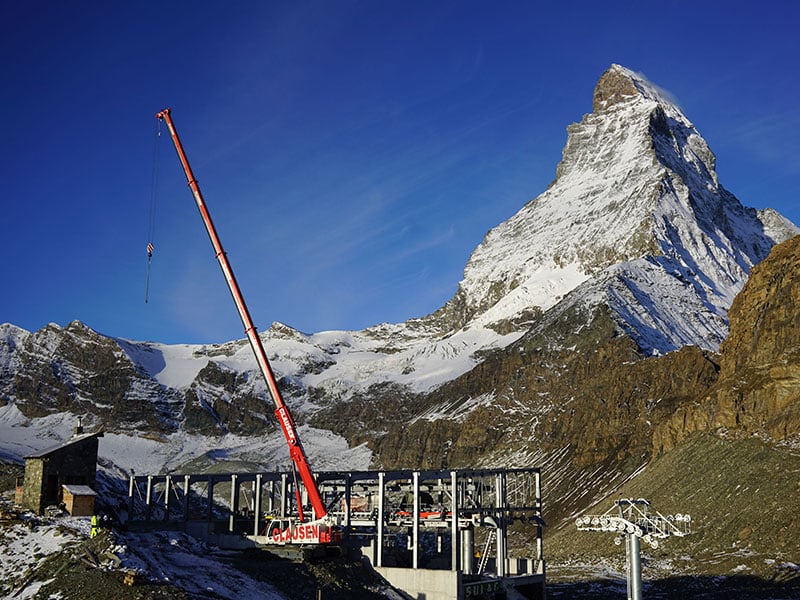Liebherr is a Swiss-based company, which might explain how one of its LTR 1060 crawler cranes managed to climb 1000m up a 45-percent gradient in the Alps to complete the erection work of a mountain station for the new Hirli chairlift in Zermatt.
Crane operator Clausen transported the crawler crane to Stafelalp at an altitude of 1,900 metres on a compact low loader. From there the LTR 1060 had to cover the rest of the distance of eight kilometres along unmetalled hiking paths on its own.
The biggest hurdle that the Liebherr crane had to overcome was a stretch of two kilometres with a gradient of 45 percent. After around five hours the LTR 1060 and the Clausen team finally reached the site at an altitude of 2,900 metres.
Over the next few days it installed the steel structure for the new mountain station, then had to assemble the drive engine. The LTR 1060 had to be driven to the assembly site carrying the 16-tonne engine before it could hoist it into position.
“This so-called ‘pick-and-carry’ operation is a major selling point for telescopic crawler cranes,” Liebherr says. “They can travel holding a full load which makes them particularly flexible to use.”
The crane spent around three weeks at this altitude, then the 60-tonne machine had to tackle the downhill journey.
“The LTR 1060 unites the advantages of a telescopic crane and those of a crawler crane,” Liebherr says. “The crawler chassis has outstanding off-road capabilities and manoeuvrability. What is more, the cranes displace their load with excellent precision.
“The advantages of telescopic cranes are short set-up times, easier transportation and the variability of the boom and jib system,” the company adds.
Click here to find crawler cranes for sale.


